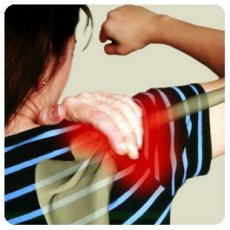Medical expert of the article
New publications
A
A
A
Clinical forms and variants of osteoarthritis
Alexey Kryvenko, Medical Reviewer, Editor
Last reviewed: 08.07.2025
Last reviewed: 08.07.2025

х
All iLive content is medically reviewed or fact checked to ensure as much factual accuracy as possible.
We have strict sourcing guidelines and only link to reputable media sites, academic research institutions and, whenever possible, medically peer reviewed studies. Note that the numbers in parentheses ([1], [2], etc.) are clickable links to these studies.
If you feel that any of our content is inaccurate, out-of-date, or otherwise questionable, please select it and press Ctrl + Enter.

Analysis of the results of large population studies made it possible to identify four most common clinical forms of osteoarthritis:
- Early monoarthrosis of the lower limb joints. It is obvious that monoarthrosis of the knee, ankle or other joints of the lower limbs in young people is secondary - after an injury or surgery (for example, meniscectomy). This form of osteoarthrosis is rare.
- Early monoarthrosis of the hip joint is also secondary - post-traumatic (mainly in young men) or against the background of congenital dysplasia (mainly in young women).
- A combination of osteoarthrosis of the knee joints and the joints of the hands. This form is often found in middle-aged women with obesity and hypertension. The interphalangeal joints are affected with the formation of nodules and mainly the medial tibiofemoral and patellofemoral compartments of the knee joint.
- The combination of gonarthrosis, osteoarthrosis of the hands, spine and osteoarthrosis of other localizations is usually called generalized osteoarthrosis. I. H. Kellgren and R. Moore (1952) recommended calling generalized osteoarthrosis "... the presence of radiographic signs of osteoarthrosis in six or more groups of joints, including the first carpometacarpal joints of the hands, proximal interphalangeal joints of the hands, apophyseal joints of the spine, knee joints and first metatarsophalangeal joints of the feet." According to the ACR osteoarthrosis classification, generalized osteoarthrosis is osteoarthrosis with damage to three or more joint groups with mandatory involvement of the following: knees, hip joints, apophyseal joints of the spine and joints of the hands and feet.


 [
[